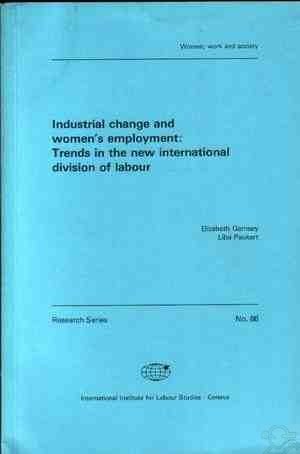 |
 |
 |
Industrial change and women's employment :Trends in the new international division of labour
|
Book : Industrial change and women's employment :Trends in the new international division of labour Author : * Liba Palikert * Elizabeth Garnsey Language : English Library : Women Publish Place : Geneva ISBN : 92-9014-411-4 Publish Date : January 1987 Publisher : International Labour Offıce Geneva Book Type : Report Book Number : 949 |
 |
INDEX
TABLE OF CONTENTSPreface
InTroduction
A. The new industrial orGanisation and its impact
on women workers
1. Relocation of industry from developed to developinG countries
Women workers in export-processing zones (EPZs)
5. Employment Partners outside EPZs.
Women workers and the informal sector of production
1. Quantitative aspects of women's employment
in industry.
Analysis of statistical evidence by regions and country groupings
2. Trends in female industrial employment,
1960-80
Consequences of the industrialisation process for women as workers and as consumers
1. Benefits for women as workers.
i. Industrial employment and income
generation
Earnings
Women's earnings in manufacturing: real wage trendsMale and female earnings differentials in manufacturing
Social benefits
Fringe benefits
ii. Working conditions
Hours of work
Part-time work. Peripheral forms of employment
Occupational safety and health
iii. Occupational status of women in
indus try
Vertical occupational segregation
Women with an independent or
decision-making status
Women in management
iv. Women and trade unions.
2. Consequences of the industrialisation process for women as consumers
D. Possibilities and prospects of improving women's role in industry
1. Improvement of the quantitative and
qualitative aspects of women's employment
in industry
i. The advantages of expanding women's employment opportunities in industry... Women workers in the formal sector of manufacturing
Women workers in the informal sector of goods production in urban and rural areas
Own-account workers
ii. Improvement of the relative level of women's earnings and other income from work
iii. Improvement of women's working conditions2. Concrete measures for improving women's role and situation in industry
i. Legislative measures
ii. Access to education and training
iii. Adjustment of measures to local
resources and conditions
3. The role of public sector employment for women workers
E. Conclusions
1. Women's participation in industry: findings of the study
2. Women's contribution to industrialisation and to the development process
Appendix Bibliography.


